Exercise: Financial Analytics

Payment defaults due to credit card debts – currently these are expected to reach a ten-digit sum within US retail-lending alone. Financial service providers, hotels, gastronomy and retail – they all face the same question: Will a potential customer or debtor pay or not? And if not, what damage is to be expected? Procedure:
Procedure:
Instead of modeling a logistic regression with all its weaknesses, we rely on state-of-the-art methods such as ensemble models. Case in point: The random forest method leads to significantly more accurate forecasts. Amongst other variations, it is a proven learning method for classification and regression analysis. Goal:
Goal:
Quick and comprehensible decisions with a simple algorithm, easy to understand and flexible in application: Which methods lead to the best result for which data structure? Is a better forecast quality accompanied by higher computational complexity? Which factors are decisive for automated lending practices and which remain hidden from us? Conclusion:
Conclusion:
Random Forest and its variations are particularly suitable for processing large amounts of data with many classes, characteristics and training data, whilst providing remarkable result and forecast precision.This sounds like one of your issues? Let’s take a look together.
Applied Frameworks







